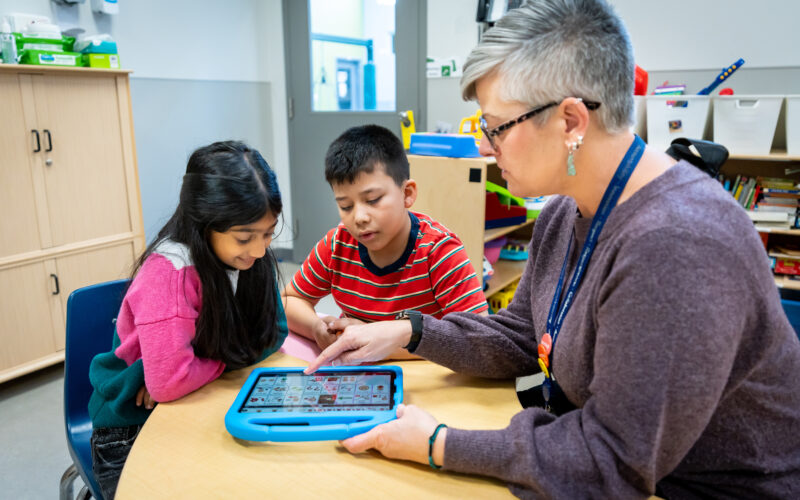Spring is full of changes – longer days, blooming flowers and warmer weather. But for children
with autism and sensory sensitivities, these shifts can also be overwhelming. A new season can introduce
unfamiliar elements, such as changes in temperatures, new smells and sounds, and increased outdoor activity can
disrupt their sense of routine.
The good news? There’s a lot to adapt to when transitioning from winter to spring, so understanding common
challenges and preparing in advance can help make the transition smoother and more enjoyable for your child.
We’re sharing some practical tips and strategies to help your child cope better with springtime changes while
keeping their sensory needs and safety top of mind.
Helping your child transition: 3 practical tips
1. Talking about what to expect
We all appreciate the feeling of being ready and prepared. Taking the time to talk to your child about upcoming
changes in a new season can help them feel more confident and familiar with what’s to come.
Using visual supports like pictures, videos or social stories, can be a great way to introduce spring-related concepts
and explain the anticipated changes. This can include:
- Describing changes in temperature, smells and sounds and how their senses might react
- Showing them examples of new animals or bugs they might see
- Explaining how they’ll be switching from their winter clothes to spring outfits
- Discuss potential changes in their daily routines, especially with spring and summer break or later sunsets
affecting bedtime
Every child is different, so find the approach that works best for your family. The most important thing is to help
your child understand and experience some of the new sensory stimuli and provide space to ask questions, express
concerns, and feel ready for change.

2. Make the transition fun and personalized
While preparation is key don’t forget that it can also be enjoyable! Going from the cold weather to warmer
temperatures allows for more variety in activities to explore.
When discussing changes with your child, make sure to leave room to talk about what they might be excited about.
You can offer your child different types of spring-friendly activities that fit their interests and comfort levels. Some
spring activities might include:
- Painting natural objects (rocks, leaves, etc.)
- Taking sensory walks to explore new environments
- Picking out their choice of clothes for the upcoming season
- Playing with outdoor sensory bins
- DIY arts & crafts in the backyard or park
Change can be hard for all of us, but especially for children with autism and sensory sensitivities. By making it
enjoyable, we can help our children feel less stressed. Introducing fun activities they enjoy can help expose them
to some of the new sensations, smells, sounds or textures of spring.
Olivia Hagemeyer, Director, Children and Youth Services, really emphasizes the value of including your child in
these changes.
“Making changes enjoyable and tailored to your child’s interests is crucial. By following their lead and giving them the chance to make decisions, you empower them to feel in control and confident.” — Olivia Hagemeyer, Director, Children and Youth Services
3. Establish a smooth transition plan
So, we talked about the importance of getting prepared and involving some fun. Now, we’re ready to create a
plan. A plan can look very different from one family to another. It can take time, but it’s good to figure out what
feels right for you and your child.
One effective tool is creating a visual schedule with your child so they know what they can expect and how their
new routine will look. Visual schedules are supports that provide your child with information about what will
happen during various times throughout the day.
These can have customized goals and include:
- A variety of formats, such as cartoons, pictures, and written lists
- Step-by-step instructions for a new routine like getting ready for a park visit
- Schedules that outline the activities happening throughout an entire day to set expectations. Slowly
introducing these expected changes through a visual schedule, such as adjusting bedtime routines, new
spring activities, or rules and expectations that come with outdoor play, can give your child a tangible
item to see what’s coming up and providing them time to prepare
Welcome spring with confidence
Any type of transition can be hard and anxiety is a normal reaction. Supporting your child through these changes
and validating their feelings is key. Offering gradual exposure can also help them understand what’s to come so
they can feel more confident. Trust your instincts and remember to do what you feel is best for your child and
yourself.
Need more support? Explore our Resources Page for expert tips, downloadable guides, and tools to help your child
transition smoothly into spring.


